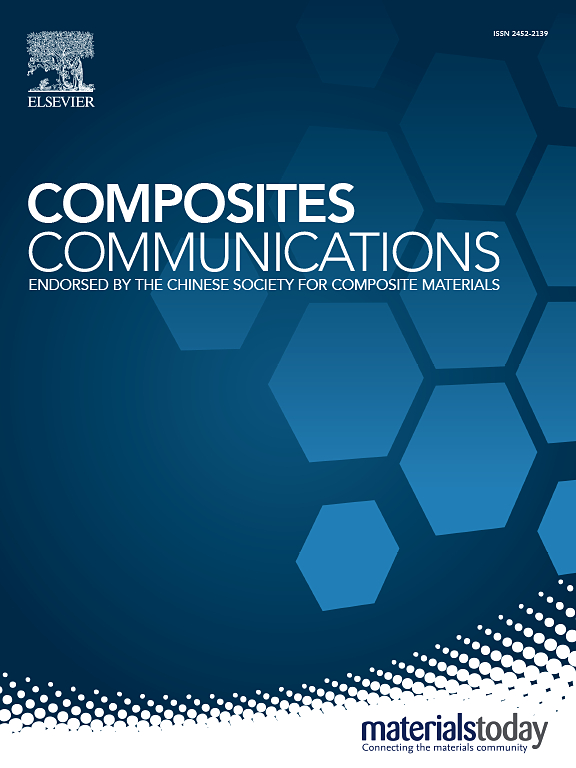Constructing multiple heterojunctions of silver-gallium-gallium oxide on polyetherimide microspheres for lightweight and efficient microwave absorption
IF 6.5
2区 材料科学
Q1 MATERIALS SCIENCE, COMPOSITES
引用次数: 0
Abstract
Heterojunctions in conductive or magnetic materials have been well demonstrated to enhance their microwave absorption properties. Herein, polyetherimide (PEI) micro-spheres were first synthesized using an emulsion precipitation method, and plated with silver (Ag) on their surfaces to create PEI-silver (PA) composite micro-particles. Subsequently, liquid metallic gallium (Ga) was coated on the surface of the PA microspheres to obtain the PEI/Ag/Ga (PAG) composite particles. A spherical shell with multiple heterojunctions of Ag-Ga-gallium oxide (Ga2O3) were constructed on the PAG composite micro-particles through an annealing treatment to enhance microwave absorption. Specifically, the PAG45 samples with 45 wt% gallium content demonstrate a minimum reflection loss of - 45.27 dB at a thickness of 2.2 mm and a maximum effective absorption bandwidth of 5.6 GHz at a thickness of 1.4 mm in the intermediate frequency range. The heterogeneous interface of Ag-Ga-Ga2O3, the large specific surface area of the PEI microspheres, and the multiple scattering among the microspheres all contribute to the improved wave-absorbing performance of the composite micro-particles.
求助全文
约1分钟内获得全文
求助全文
来源期刊

Composites Communications
Materials Science-Ceramics and Composites
CiteScore
12.10
自引率
10.00%
发文量
340
审稿时长
36 days
期刊介绍:
Composites Communications (Compos. Commun.) is a peer-reviewed journal publishing short communications and letters on the latest advances in composites science and technology. With a rapid review and publication process, its goal is to disseminate new knowledge promptly within the composites community. The journal welcomes manuscripts presenting creative concepts and new findings in design, state-of-the-art approaches in processing, synthesis, characterization, and mechanics modeling. In addition to traditional fiber-/particulate-reinforced engineering composites, it encourages submissions on composites with exceptional physical, mechanical, and fracture properties, as well as those with unique functions and significant application potential. This includes biomimetic and bio-inspired composites for biomedical applications, functional nano-composites for thermal management and energy applications, and composites designed for extreme service environments.
 求助内容:
求助内容: 应助结果提醒方式:
应助结果提醒方式:


